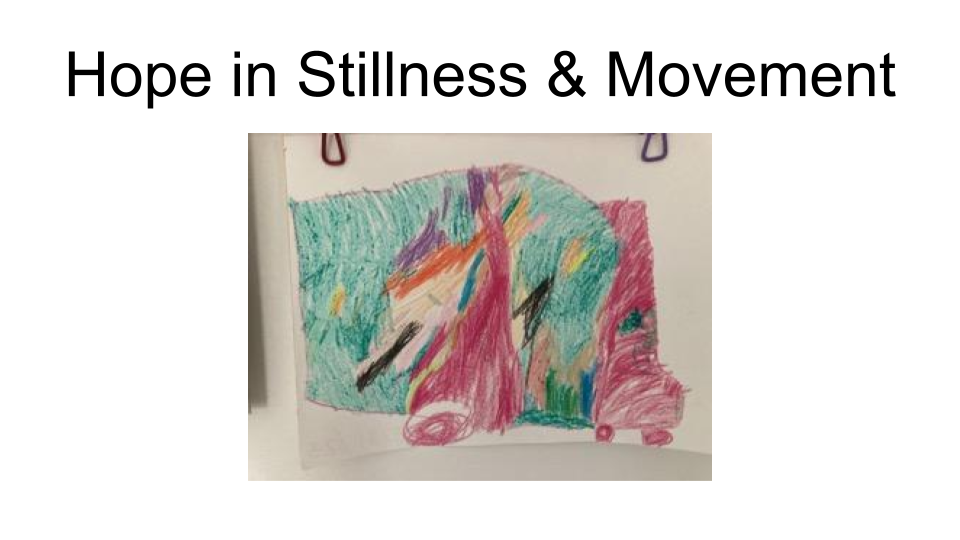
Slide 1: A dynamic piece of Santiago’s art; his movement stems from his stillness.
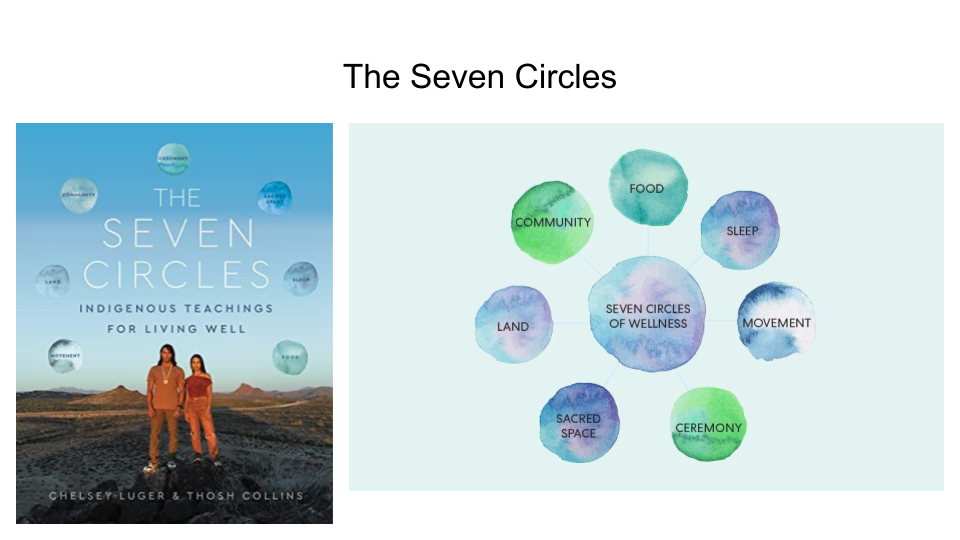
Slide 2: The seed for this book; if movement is integral to wellness, how do communities move? How do communities in the Advent story move? How does movement shape Advent?
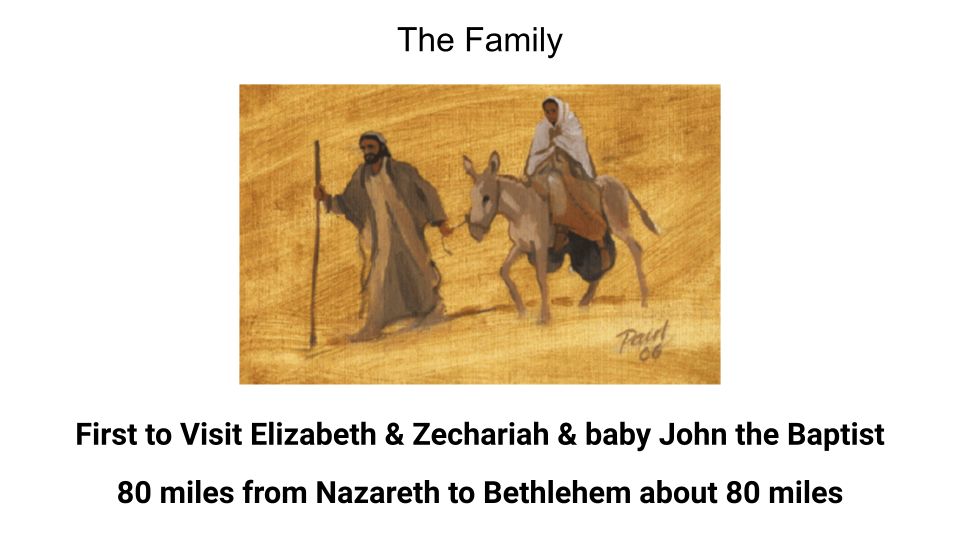
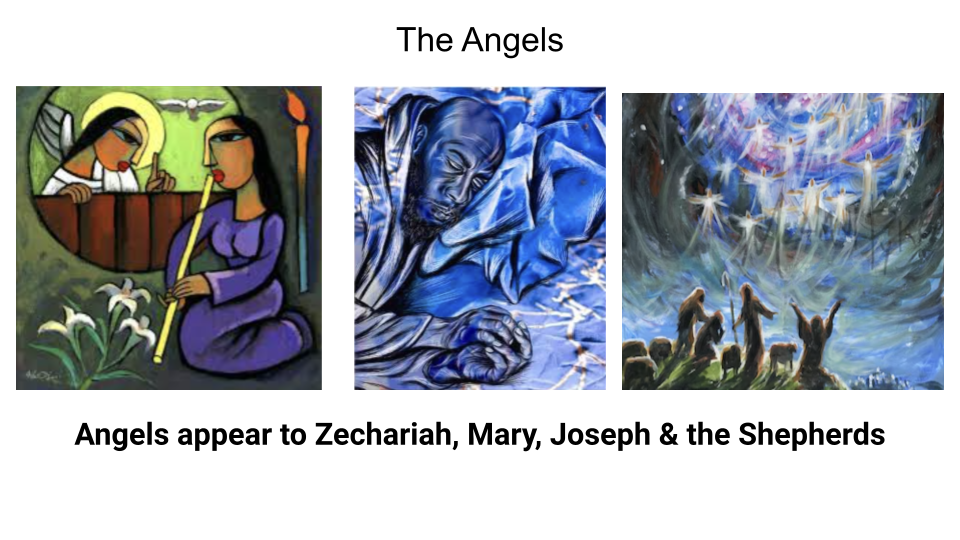
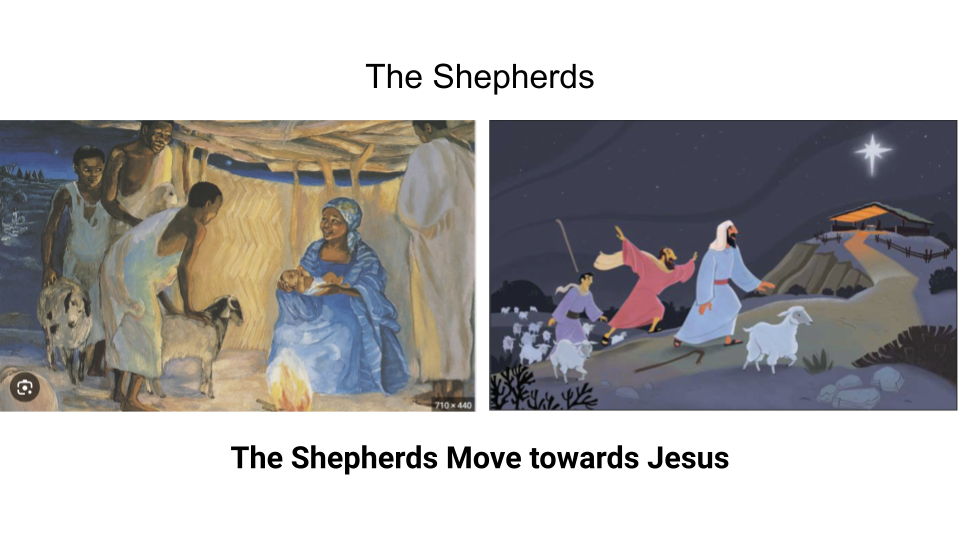
Slides 3-5: Here are three communities in the first two chapters of Luke that move. First, of course, is Joseph, Mary & Jesus in the womb. They visit Zechariah & Elizabeth, some relatives, and there is that well known image of Jesus & John the Baptist greeting each other in the womb. Then of course, for the census, they have to travel about 80 miles! No small trip with a mule as your main source of transportation. Second, is the community of angels that God dispatches. To Zechariah, to Mary, to Joseph in his sleep, and to the shepherds in the fields. Third, the shepherds are sent to Jesus. A host angels sends them. So, we see in Luke 1-2 at least three different examples of groups moving in unison
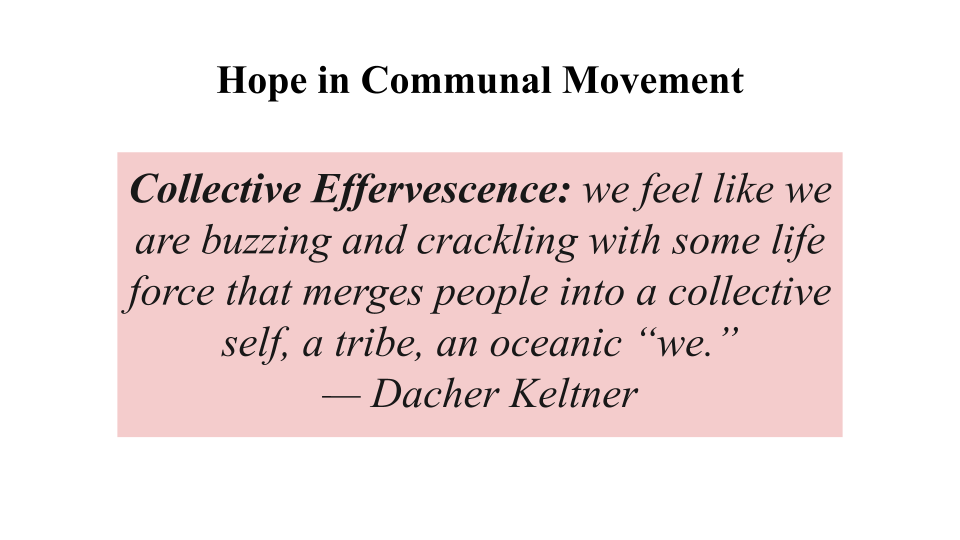
Slides 6: What happens when we move in unison? It can be an extremely powerful experience to feel yourself in sync with a group of people. One researcher, Dacher Keltner, discovered that collective effervescence was one way that humans routinely experience awe. Today, I’ll be working with this idea, but through the lens of hope.
Slide 7: This slide is not scientific, or pulled from anywhere; it’s simply my wanting to create a visual of how hope & movement connect, based on my time in my L’Arche, 8th Day, and my dance community. As I was reflecting on the idea on communal hope, unity, direction & wholeness were concepts that emerged.
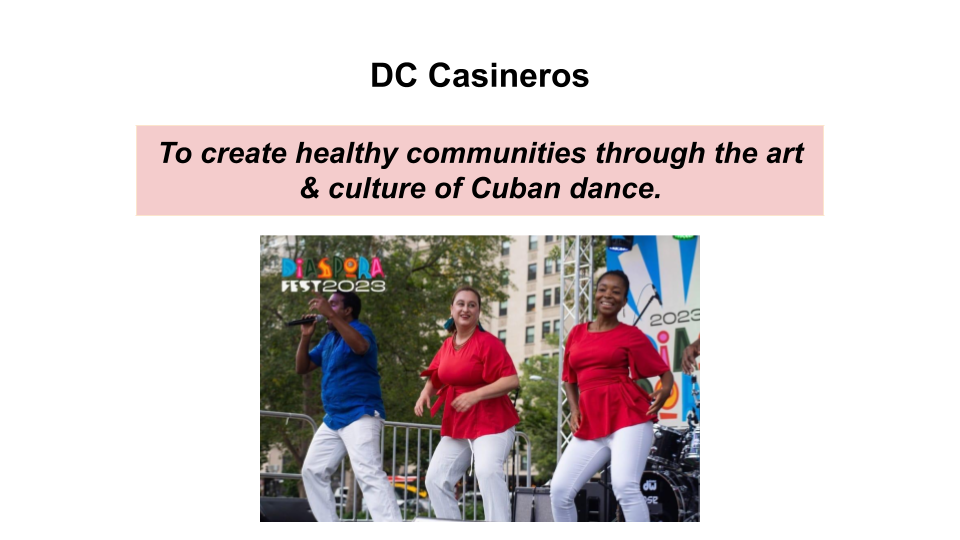
Slide 8
I have been a casual lover of salsa all of my life, but in the recent three years I’ve really been steeping in the musicality of salsa & also some of its Cuban relatives — genres such as son, songo & timba — and I’ve been doing this in the context of a community called DC Casineros. We dance to a multitude of kinds of dance, but probably the most common is called casino. Today, I want to take you to one of my growing edges as a dancer.
If you’re thinking, hold on, this is supposed to be an Advent sermon, I promise I will connect this back to the scriptures in a little bit! So, just stay with me! I hope the metaphor I flesh out will be a fresh way to enter Advent & Christmas.

Slide 9: People dancing to the musical streams of son, salsa, songo & timba can accentuate the music in different ways in their bodies. All of these dancers usually count from 1-8. When you dance “on 1”, you’re dancing a tiempo, or “on time.” When you dance contratiempo, you are dancing “against time.” One of the amazing things about dancing contratiempo is that you create a “pausing” sensation in your body, even while you are moving. It’s stillness in motion. When dancing contratiempo, a dancer is usually connecting with double bass or with the conga, which often makes a tun-tun sound on the 4 & 8 beats. In many of these genres, however, you often don’t stay in contratiempo for the whole song, especially if there is a change in instrumentation & the cowbell enters. The cowbell often compels the dancer to match its increased tempo, luring the dancer to switch from contratiempo to a tiempo.

Slide 10:
In this video[1], we begin by dancing in contratiempo, then we move to a tiempo, and then we move into a rueda. There is a clear progression, wherein our bodies match the changes in tempo & the change in musicality.

Slide 11: As 8th Day, we also have a force outside of ourselves to which we respond. Though it sounds pretentious, by faith, we trust that God indeed speaks to us.
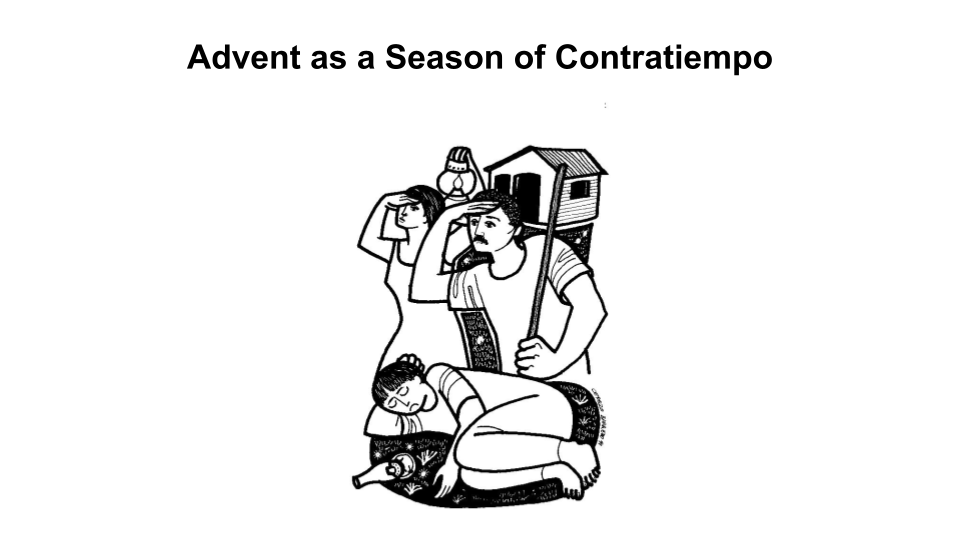
Slide 12 — Who Cares?!
So, why in the world am I telling you this? For me, I feel like I understand Advent more deeply when I claim it as a time of contratiempo. When someone is dancing contratiempo, they have to, as Jesus says in Mark, stay alert. They need to be attentive because if the instrumentation changes, then there is probably an invitation to change with the music. I find it helpful to imagine The God of Advent as a bass player who encourages me to find the pockets of stillness, to pause meaningfully so I can hear the bells when they arrive.
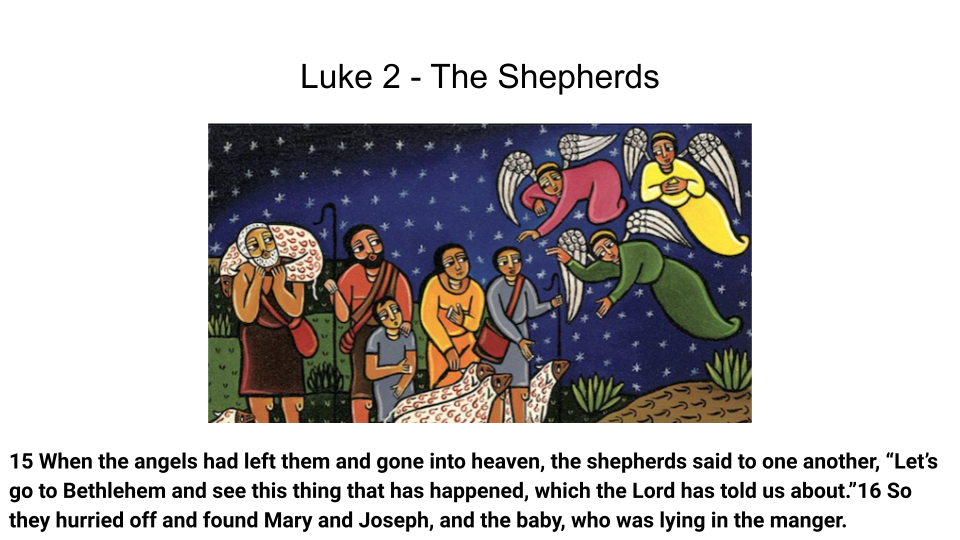
Slide 13 — Shepherds
This is why I find the passage with the shepherds such a good model for the purpose of Advent. We want to be able to respond like they do. The shepherds remind us that Advent is not a time of waiting for waiting’s sake. Advent is waiting with purpose. Rather than thinking of Christmas as an event that happens to us, the shepherds show us that there will be a time when we will have to move in order to meet God. (re-read Luke 2:15-16)
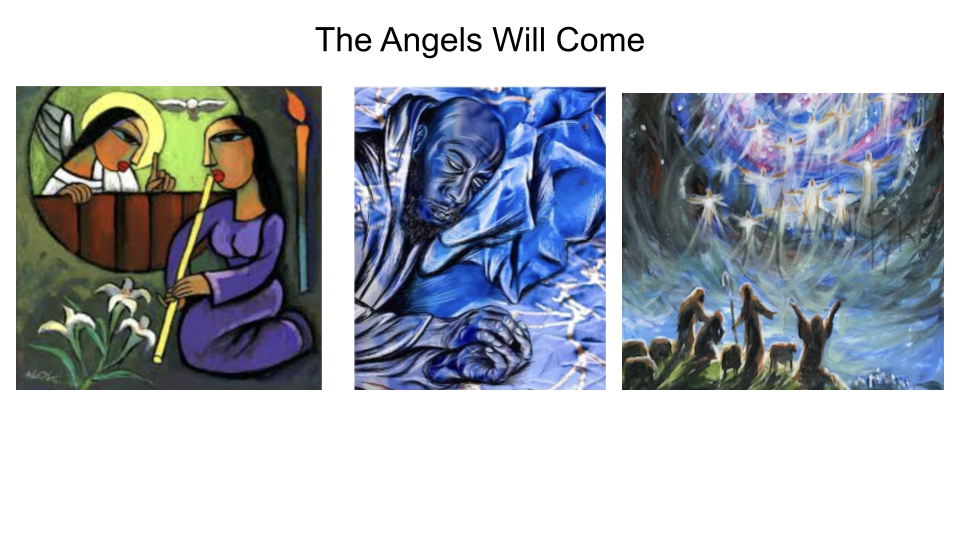
Slide 14 — Angels
Over & over, God speaks to the deepest parts of our lives, as individuals & as communities. God would have us “hurry off” to that to which we’re called. (v. 16) What is that for you? What is that for us? An angel will come. It could be through a conversation, it could be in our sleep, through the visit of a family, through the pain of addiction, through death, through an instrument we did not expect. The first chapters of Luke shows us that God shows up in countless ways. The question seems not so much if God will arrive, but rather, how to be ready for it & how to respond when it happens.
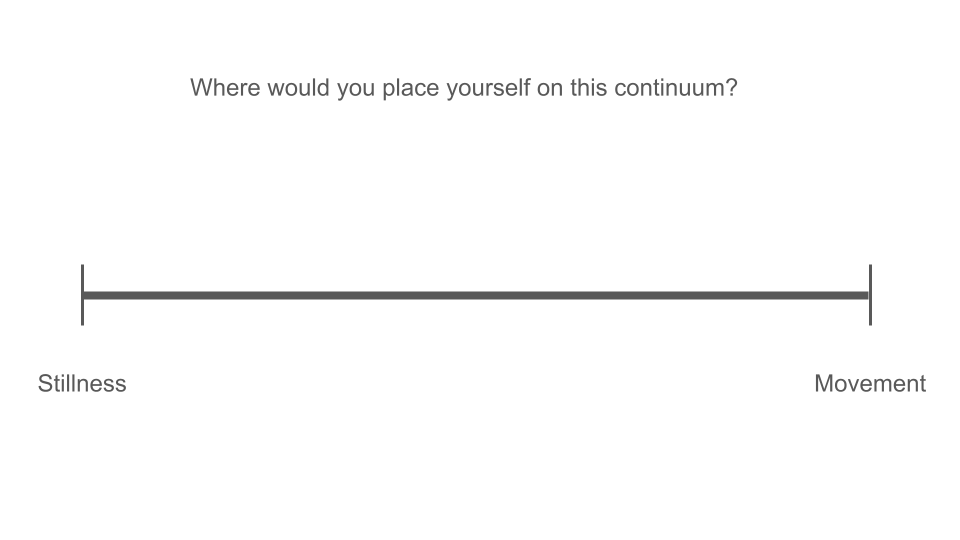
Slide 15 — Continuum
Where would you put yourself on this continuum? Is it easier for you to enter the stillness or to enter movement? What I like about this continuum is that it helps me to give myself grace in honoring my hard-wiring, and it also challenges me to integrate stillness.
For me, movement can be jittery, rooted in fear rather than trust. It can be a way to numb something I may need to feel, or a way to distract myself from metabolizing a hard experience. This Advent, I’m trying to use three practices to take responsibility for regulating myself & cultivating more stillness. : 1) Swiping Down, 2) Physiological Sighs, 3) Five Minutes of Stillness Before Bed. If you’re on the right side of the continuum, I offer these small ways as toys you might play with.
If you are like Crisely & you are on the left side of the continuum, I encourage you to explore ways to incorporate movement into Advent, to find ways to ramp up your energy, to find a movement practice that helps you respond to God’s voice.
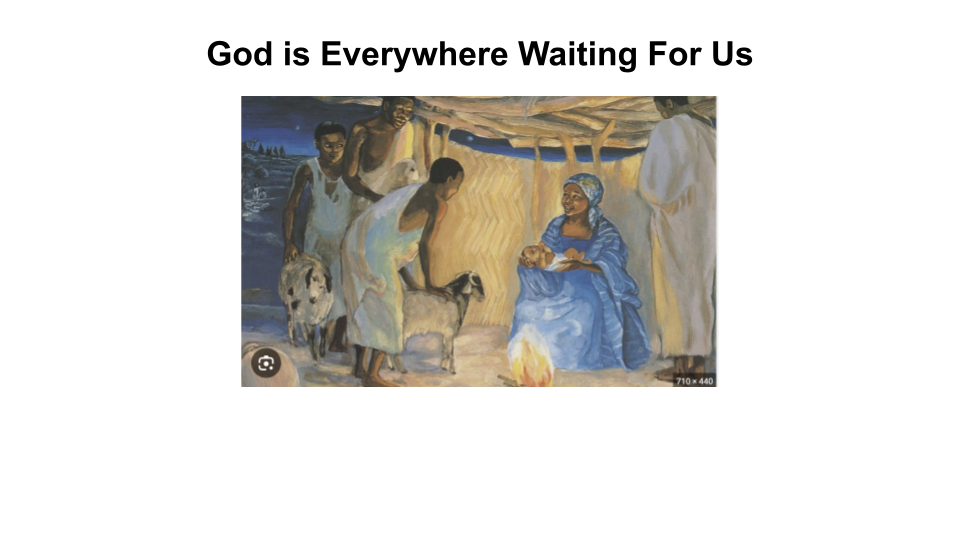
Slide 16 — The Gift of Community
As we wait for the coming of Jesus, it is beautiful to recognize that God also waits for us. I love that God sends the shepherds to God. In Jesus, God sends us to God’s self. As one theologian puts it, God is everywhere waiting for us.[2] In Advent, we get to mirror God, who waits & then moves towards us. Like the shepherds, we are in a time of preparation, but the time will soon come when God will ask us to move.
Somehow, doing this work of hearing God & then moving towards God feels more possible in the context of community. So, as we journey together, let us give thanks to God that we have each other.
We thank God for the clarity that comes when we find that still center. For those of you in community that say, “hold on!” we need to listen more deeply; we need to slow down. Are we honoring our limitations, are we in our integrity? Is there equity here, is there access into the circle? For those of you who pause us & who prepare us to become porous to God’s Spirit, thank you.
And so, too, we thank God for those in community who were born with a spring in their step, who stimulate us, who say “come on!”. I thank God for people like Mariela, who wake up & before she even has pants on, immediately goes to put her shoes on & grab everyone else’s shoes. For people like her who say, it’s time. God already spoke. God is on the move & we have to go.
And finally, we give thanks for those of in community who live at the center of these two poles, who connect the best of our extremes, and who call us in to a healthier life together when we lose our way.
We need each other, and God has given us each other. I find great hope in pausing with you & moving with you. I pray that this Advent brings us unity, wholeness & direction. In the Name of Jesus, for whom we wait together.
Amen.
[1] Here is another video of some friends switching between contratiempo & a tiempo to give you a sense of what this looks like.
[2] Willie James Jennings says this in his commentary on Acts 28: 14-15, when Paul is incarcerated and being taken to Rome. A community of Christians meets him in the city Potelius.
